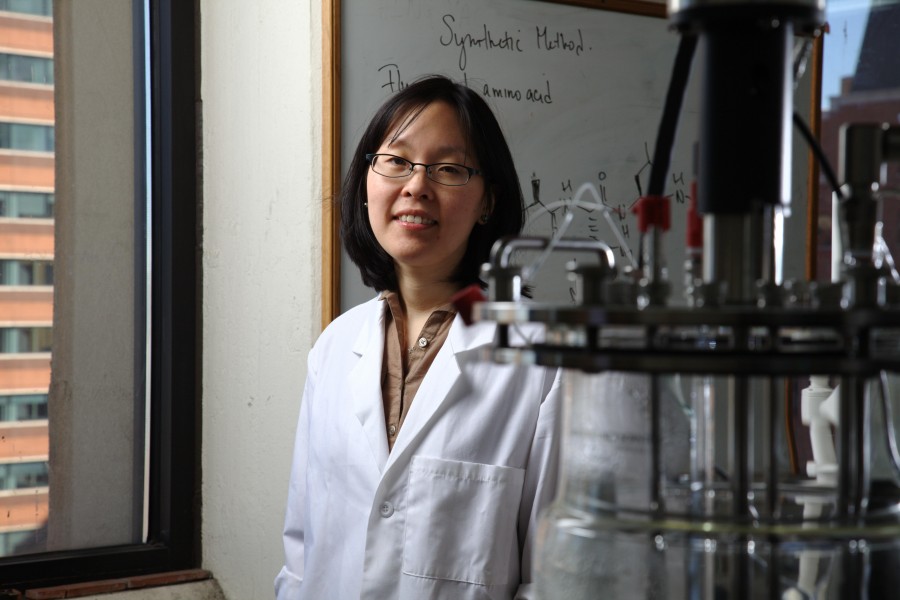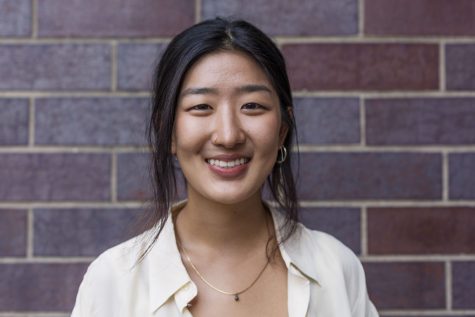Q&A: Tandon Professor a Rising Star in STEM
NYU Tandon associate professor Jin Kim Montclare has been named a 2016 Rising Star of chemical engineering.
March 23, 2016
NYU Tandon associate professor in the Department of Chemical and Biomolecular Engineering Jin Kim Montclare, PhD, was recently named a 2016 Rising Star by the American Chemical Society. Not only has Montclare dedicated her career to spearheading the chemical engineering field, she has set an example particularly for female scientists who strive to make an impact within their fields. She also heads an outreach program that seeks to expose K-12 students to STEM and invites high school students to her lab at Tandon for research.
Montclare was presented the award at the 251st ACS National Meeting in San Diego, California, from March 13 to 17. Montclare also spoke at the Rising Star Symposium as a featured speaker, offering her experience engineering artificial proteins. Organized by the ACS Women Chemists Committee, the Rising Star Award recognizes 10 women scientists who have contributed innovative research to their respective fields of chemistry and chemical engineering.
WSN talked with Montclare about her research and getting young people involved in the STEM fields.
WSN: What research have you conducted at NYU Tandon?
JM: From first constructing the proteins and molecules, we generate the proteins, with the design set ahead of time. What results are materials and nano-proteins that can function such as working to detoxify organophosphates which are found in pesticides and have detrimental health risks.
WSN: How do you approach researching and conducting experiments in the Lab?
JM: I provide students a general background of the topic they are interested in. There are teams already working on some projects. I figure out which students should work together to match up that is the most suitable. From there, the students learn. They become more comfortable and put in their own designs. Many of the most interesting projects I have seen have spurred like this. One of these was a project about delivery genes and RNA delivery. The lab had biomaterials on hand so the student thought, why not apply them to the process? Traditionally, we deal with small delivery. But examples like this show how students come up with great ideas.
WSN: What initially drew you to chemical engineering?
JM: For me, the interest started back in high school. I was inspired by the sciences and especially because I liked reactions that made crazy noises and explosions. In college, I became interested in chemistry, especially organic chemistry. In grad school, I began studying something of an in-between chemistry and biology — biology but with chemical knowledge. Cal Tech was where I actually began engineering molecules. I was trying to focus on making protein-engineered hydrogels that could potentially heal wounds.
WSN: Why are outreach programs important to you?
JM: The goal of the outreach program is to introduce young people K-12 to STEM studies. Many students from the community have participated in researching at the Lab and other groups on campus have provided the opportunity such as engaging in Black Girls Code. I’m part of this community to make it accessible for these students. In addition to research, outreach with these local high schools gives students the chance to go out to make their ideas become a reality.
WSN: Why is it important to you to encourage students to pursue STEM fields?
JM: I’d like to see more individuals pursue STEM fields, really make a difference in the lives of other people and I’d love to see more diversity in the people that pursue these fields. I hope to see STEM increase the diversity and the numbers.
WSN: How would you describe your role in the NYU community?
JM: What I’m doing in the community is very different from my grad studies. What I do in the lab is driven by my students and their interests, what they want to see and learn. What I enjoy is seeing my students develop into outstanding researchers, to think of problems and find ways to solve them. I’m open to anyone as long as they understand the basic background. My lab is driven by what these students are interested in.
WSN: What drives you to teach as a professor and also a member of the community?
JM: Partly, because I had a wonderful experience learning from tremendously awesome mentors and professors. And I want to expose my students to their wonderful interests. I want to see them succeed with whatever they come up with. Not only do I want them to be outstanding, I want more than anything for them to be happy about their accomplishments.
WSN: What advice do you have for aspiring researchers and scientists who want to pursue fields of science but are unsure of where to start?
JM: Find any opportunity that you can get whether it be lab experience, collaboration with other people, you want to have a hands-on experience because it is crucial. After all that, the better you are in narrowing down your decision to focus in a specific field.
Email Nina Jang at [email protected].
























































































































































